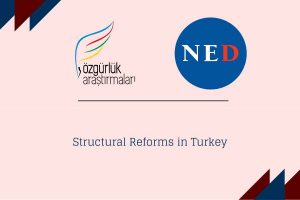Brussels doesn’t need to rule your market to write your rules. It only needs to sit at the gate. With the EU’s Markets in Crypto-Assets Regulation (MiCA), that gatekeeping power has finally arrived for crypto. MiCA is less a single law than a portable constitution: it defines stablecoins with Puritan clarity, drags exchanges and custodians into a licensing net, and hard-wires the anti-money-laundering “travel rule” into the industry’s plumbing. If your users, partners or payment rails touch Europe, you are in its orbit—whether you admit it or not.
Turkey has felt the pull and, characteristically, responded with a blend of imitation and some self-preservation. Ankara’s 2024 amendments and the Capital Markets Board’s 2025 communiqués borrow Brussels’s scaffolding—authorization, governance, custody segregation, market-abuse guardrails—and even introduce a local version of reverse solicitation, allowing resident-initiated access to foreign platforms while policing marketing at home. Yet on payments, Turkey slams a door MiCA leaves half open: stablecoins may be licenced and leashed in Europe; in Turkey, crypto remains fenced off from point-of-sale dreams.
This is the Brussels effect at its most revealing. It does not command; it conditions access. It exports vocabulary—white papers, travel-rule metadata, sCASP-style scrutiny—and lets counterparties price non-compliance as a commercial risk. The question for Turkey is not whether to “align” but where alignment pays. Calibrate the parts that buy interoperability and investor protection; resist the ritual mimicry that merely bloats fixed costs or enlarges discretionary power. The pages that follow trace the similarities worth keeping, the differences worth defending, and the choices that will decide whether Turkey is pulled into orbit—or plots its own, stable path beside it.
MiCA: Europe’s Crypto Rulebook in Three Acts
Before examining Turkish regulations regarding crypto, let me explore MiCA first. MiCA is best understood as a three-act play. Act One: the law’s birth and scope. Proposed in 2020, published in the Official Journal in June 2023, MiCA creates a unified rulebook for crypto across the EU’s 27 states. It draws hard lines around stablecoins (two species only: e-money tokens tracking a single fiat currency, and asset-referenced tokens tied to baskets) and brings crypto-asset service providers (CASPs)—exchanges, custodians, brokers—into a single authorization and supervision regime. Passporting is the carrot: win authorization in one member state, sell across the bloc.
Act Two: the timeline and the money plumbing. Stablecoin rules started biting on 30 June 2024; the rest of MiCA entered into application on 30 December 2024, with transitional paths stretching into 2026 as national supervisors and ESMA/EBA roll out guidance. In parallel, Europe’s “travel rule” for crypto transfers—the AML obligation to send verified payer/payee metadata—kicked in on 30 December 2024, forcing CASPs to align their pipes if they want to clear into Europe. The choreography may sound bureaucratic, but it matters: if you can’t attach the right data to a transfer, you can’t move tokens through compliant European rails.
Act Three: what MiCA tolerates—and what it does not. Algorithmic stablecoins, the industry’s perpetually over-promised, under-collateralized dream, don’t make the cut; without explicit reserves they don’t fit MiCA’s stablecoin categories and are effectively barred from EU circulation. Issuers of recognized stablecoins must hold liquid, 1:1 backing and live with heavy disclosures and audits. ESMA has also nailed down the infamous “reverse solicitation” sliver for non-EU firms: it is a narrow exemption, an exception rather than a business model, and any hint of marketing to EU clients voids the defense. In other words, if your users or flows touch Europe, you either become a CASP—or you don’t touch Europe.
Comparing MiCA and Turkish Regulation
Now pivot to Turkey, which is close enough to Europe to feel the regulatory gravity, and pragmatic enough to copy the parts that help while ignoring the bits that clash with domestic priorities. In Turkey, the Parliament amended the Capital Markets Law via Law No. 7518 on 2 July 2024, putting “crypto-asset service providers” under the Capital Markets Board (SPK). On 13 March 2025, SPK issued twin rulebooks: one on authorization and corporate requirements for KVHS (III-35/B.1), and one on conduct, listing, operations and capital/liquidity (III-35/B.2).
If you want to see the Brussels Effect at work in crypto, look at the mirror that Turkish law now holds up to MiCA. This is textbook MiCA-style institution-building: define the perimeter, license the actors, hard-wire governance and systems, and let a central supervisor police it. Ankara’s 2024 amendment to the Capital Markets Law (No. 7518) adopts almost the same conceptual starting point as Brussels: a crypto-asset is the digital representation of value or of a right that can be stored and transferred on distributed ledgers. The Turkish text puts that idea on a firmer private-law footing by classing the asset as an “intangible” good; MiCA, by contrast, deliberately avoids hardwiring a property-law status at EU level and leaves that question to national systems. The spirit is shared, the legal technique differs.
They also converge on the boundary with securities law. MiCA kicks anything that looks like a financial instrument into the MiFID II family; Turkey signals the same move by parking such issuances under the Capital Markets Board’s remit. In both regimes, a “security-token” is not a MiCA/7518 creature at all—it is a security, full stop. Stablecoins reveal a similar gravitational pull. Turkey’s general justification speaks in “stable” versus “non-stable” terms that line up, in substance, with MiCA’s asset-referenced tokens; Brussels then slices the category more finely by drawing a bright line between ARTs and e-money tokens, a precision Turkey has not yet replicated in statutory text.
Where the paths diverge is that MiCA builds a service-based CASP regime—with licensing, governance, segregation of client assets, and market-abuse guardrails spelled out in primary law—while Turkey defines “service providers” more by the legal status of the firms and defers most of the operational detail to secondary rules by the Capital Markets Board. A provisional list exists but does not equal authorization.
Where does the Brussels effect land in this tale? Not as a sermon about accession chapters, but as raw market physics. Turkish platforms and wallets that want European users or partnerships will end up building MiCA-grade pipes: client identification that maps to the EU’s travel-rule data schema; custody segregations and incident-reporting that satisfy EU auditors; white-paper discipline for new tokens; governance and capital that survive passporting due diligence. Even firms that never touch an EU resident will discover that their counterparties—banks, insurers, vendors—now price risk using MiCA’s vocabulary. That is the essence of the effect: Brussels doesn’t need to convince Ankara; it only needs to condition access.
There is, however, a risk in importing the scaffolding without the skyline. Europe’s dense compliance superstructure sits atop a market of 450 million relatively affluent consumers and a legal machine able to publish, translate and enforce guidance at scale. Turkey can borrow the template, but it cannot borrow the scale. Fixed costs that are “business as usual” for a Paris- or Frankfurt-based incumbent—compliance staff, audits, upgraded custody tech—bite harder in Istanbul. Combine this with Turkey’s payments ban and you get a lopsided equilibrium: exchanges professionalize like European CASPs, but the downstream consumer-facing utility of crypto remains fenced off. That gap pushes activity into offshore venues (under the fig leaf of “reverse solicitation”) and weakens the very supervisory visibility the new law seeks to create.
Concluding Remarks
MiCA itself is no saint. It is, at bottom, regulatory mercantilism dressed as ethics: a values-laden rulebook that doubles as a trade instrument. The law forces stablecoin issuers to keep liquidity on European soil, deputizes ESMA/EBA to police market conduct, and treats third-country providers as supplicants unless they play by Brussels’ rules. The bet is familiar from GDPR: export your preferences by making access contingent on adoption. Critics already worry that stablecoin fungibility across on- and off-EU issuance could enable regulatory arbitrage—while defenders argue the framework finally curbs the “anything goes” era. Either way, the EU sets the weather; others, like Turkey, bring umbrellas.
* Ömer Faruk Şen





